Some work from this summer:
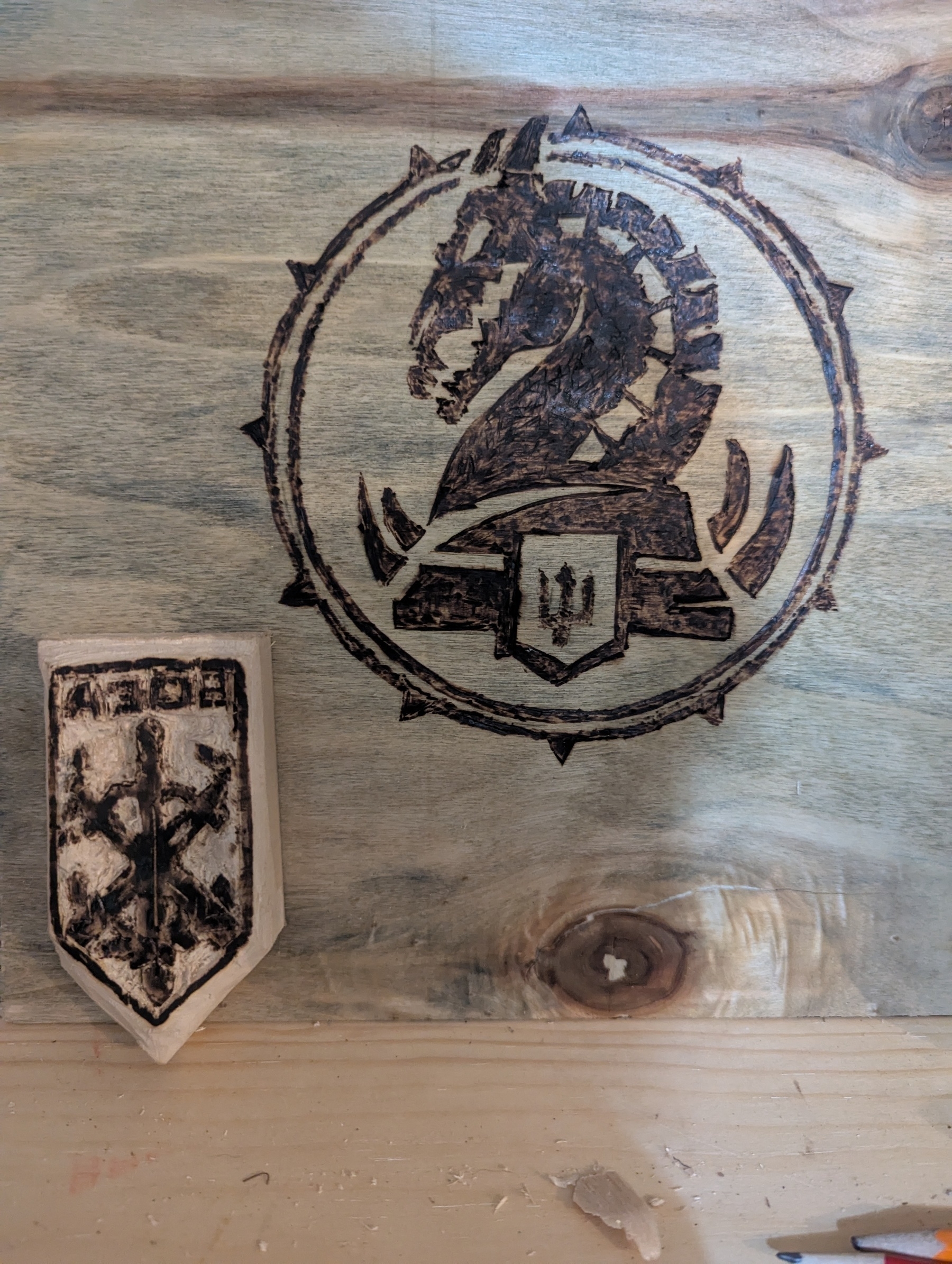
A concept map about feedback
Are you grading or delivering feedback for growth?
You decide. Purpose matters
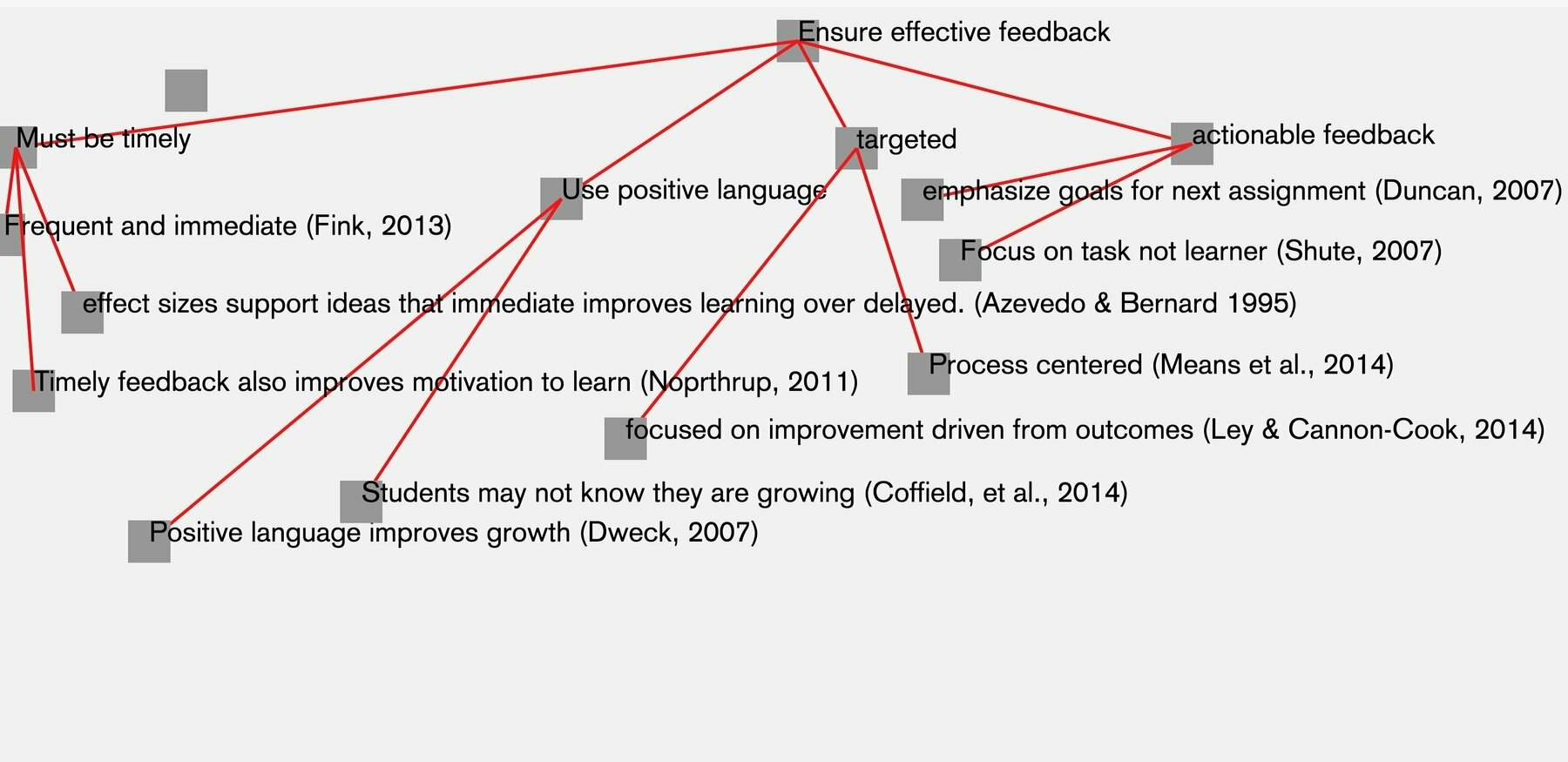
Eyes dart in reverence to peaks, holy creatures Rocks jagged and cracked thrust through a land of Eternal blue sky Keeping time to prayers dancing among priests for the devil in toes dipped in dirt paths carrying a Mother's Spirt Bouncing obbos as Oblesiks found in pebbles and stone. Afterbirth of broken Gods twisting with power far below words but picks in habitats breath of shadows as sun crosses mountain
An examples of trying to do badges and webmentions. I still don’t have a badging platform I like. To me it is just two links and a third party ledger.
That is all you need: edu407.jgregorymcverry.com/badges/li…
Generative AI and Assessment: www.aiforeducation.io/generativ…
Covello, S., & Lei, J. (2010). A review of digital literacy assessment instruments. Syracuse University, 1, 31.a-review-of-digital-literacy-assessment.pdf
Daniel Hickey & Tripp Harris (2021) Reimagining online grading,assessment, 42:2, 290-309, DOI: 10.1080/01587919.2021.1911627
Benson, Angela D. “Assessing participant learning in online environments.” Facilitating Learning in Online Environments: New Directions for Adult and Continuing Education, 100 103 (2010): 69.chapter-6-assessing-participation-learning-in-online-environments.pdf
Robertson, S. N., Humphrey, S. M., & Steele, J. P. (2019). Using technology tools for formative assessments. Journal of Educators Online, 16(2), n2.technologyformative.pdf
Spires, H. A., Paul, C. M., & Kerkhoff, S. N. (2018). Digital literacy for the 21st century. In Encyclopedia of Information Science and Technology, Fourth Edition (pp. 2235-2242). IGI Global Scientific Publishing.digital-literacy-for-the-21st-century.pdf
Donmez, I. (2020). STEM education dimensions: From STEM literacy to STEM assessment. Research highlights in education and science, 154.donmezstemassessment.pdf
Gao, X., Li, P., Shen, J., & Sun, H. (2020). Reviewing assessment of student learning in interdisciplinary STEM education. International Journal of STEM Education, 7(1), 24.GoaStemAssessment.pdf
Howes, A., Kaneva, D., Swanson, D., & Williams, J. (2013). Re-envisioning STEM education: Curriculum, assessment and integrated, interdisciplinary studies. A report for The Royal Society’s Vision for Science and Mathematics Education. London, UK.ev-2-vision-research-report-20140624.pdf
Gibson, D., Ostashewski, N., Flintoff, K., Grant, S., & Knight, E. (2015). Digital badges in education. Education and Information Technologies, 20(2), 403-410.digital-badges-in-education.pdf
Hensiek, S., DeKorver, B. K., Harwood, C. J., Fish, J., O’Shea, K., & Towns, M. (2016).Improving and assessing student hands-on laboratory skills through digital badging. Journal of Chemical Educationf , 93(11), 1847-1854.
O’Brien, K. L. (2018). Badging Best Practices. Teaching with Digital Badges: Best Practices for Libraries, 91.
West-Puckett, S. (2016). Making Classroom Writing Assessment More Visible, Equitable, and Portable through Digital Badging. College English, 79(2), 127.
Armstrong, M. B., Ferrell, J. Z., Collmus, A. B., & Landers, R. N. (2016). Correcting misconceptions about gamification of assessment: More than SJTs and badges. Industrial and Organizational Psychology, 9(3), 671-677.
Caponetto, I., Earp, J., & Ott, M. (2014, October). Gamification and education: A literature review. In European conference on games based learning (Vol. 1, No. 1, pp. 50-57).
Kocadere, S. A., & Çağlar, Ş. (2015). The design and implementation of a gamified assessment. Journal of e-Learning and Knowledge Society, 11(3).
Romero-Rodríguez, J. M., Martínez-Menéndez, A., Alonso-Garcia, S., & Victoria-Maldonado, J. J. (2024). The reality of the gamification methodology in Primary Education: A systematic review. International Journal of Educational Research, 128, 102481.
Zainuddin, Z., Shujahat, M., Haruna, H., & Chu, S. K. W. (2020). The role of gamified e-quizzes on student learning and engagement: An interactive gamification solution for a formative assessment system. Computers & education, 145, 103729.gamifiedquizzes.pdf
As we think about alternative assessments and digital tech sand tools let’s not forget about citations. They are an early form of open recognition and used to assess scholars in the Academy
An awesome line, “Boundaries aren’t restrictions they’re freedom fighters.”
Constraints breed creativity and when you free up your time possibilities are often limitless. I enjoy the Digital Detox projects.
Back episodes to 2toPonder: jgregorymcverry.com/2toPonder
Published by J. Gregory McVerry on
Featured Image: Time Adjustmentsby Bill SmithCollection of Posts on Assessment in Language Arts Classrooms
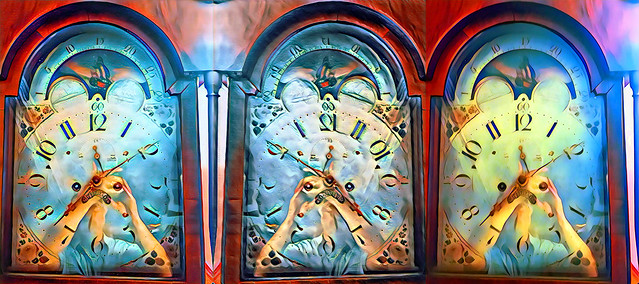
Post on Rubrics
Post on Rubrics
Published by Greg McVerry on
Perfomance, Play and Power in writing
Published by Greg McVerry on
Seasone 2 Episode 3 Considering the why in the assessment of #literacies
Published by Greg McVerry on
Season 2 Episode 4: The Basics of Comprehension Assessment
Published by Greg McVerry on
Season 2 Episode 5: Considering horrible assessment of novels
Published by Greg McVerry on
Season 2 Episode 6: Authentic assessment ideas for novels
Published by Greg McVerry on
Season 2 Episode 7: Authentic assessment for Non-fiction
Published by Greg McVerry on
Assessment and Reading Conferences
Published by Greg McVerry on
Assessment and Writing Conferences
As we begin to discuss assessment and open recognition do not forget a citation is a way to give credit.
There lot of references to quilts at the year’s OER19 because of @KateMfD keynote. I did a search of Twitter for “#OER19 quilt” very productive “#OER19 knit” one surprise. You could do this for each year’s hashtag then follow up blog streams of tweeters. David Gauntlett?-@francesbell
@FranceBell why knowledge knitting, because i do not like the metaphor of knowledge brokering and social capital. To me learning and innovation is not an economic model. Need a new metaphor for quickthoughts.jgregorymcverry.com/2019/03/07/my-…
@ltaub has written beautifully about weaving as knowledge work. I do agree this is different to the metaphorical lean that comes with brokering. It’s about craft practices, craft resources and craft product. What we make together.@KateMfD
Yes I like these metaphors for making stuff alone and collectively. I quite often think about writing as bringing different 'threads' together and there are of course also threads of posts which add up to conversations.@leohavemann
and in my idea of agentive apprenticeship, which is how learning happens in innovation systems this weaving is both done by humans, networks, and spaces until patterns emerge that become stable much like craft and quilts
I also wanted to pick an artisanal industry to capture the #feminist #pedagogy needed in innovation systems if they will ever have real impact at the system level. While I am at risk by picking an engendered art I feel it is more an honoring of tradition. way learning always be
I think instead of trying to write up this section of the chapter I might just have to quote this thread. What you folks speak of is beauty. Always wonder how better the world would be if argumentation wasn’t considered our highest form of discourse.
You have all taught me this is where decolonization must be…I believe the heteronormative practice of argumentation as Truth so rooted in the Western world is just as responsible for history as any accident of latitude. It’s all attitude.
Begin*not be but then can it be before it begins An open Before existence Maybe it is Be Shit. Is this what Shakespeare meant? Chicken, egg?
When I am reviewing work in an RSS driven classroom I often send a reply from my Blog rather than using the reply/comment feature of someone’s blog.
For learners using Blogger you can display these pingbacks as comments. Here is how:
In Blogger (Blogspot), pingbacks are a type of comment generated when another blog links to your post
.To display them on your blog, you need to enable the “Allow link notifications from other blogs (pingbacks and trackbacks)” option in your settings. Here’s how to show pingbacks on your Blogger blog:
Some thinking
I’m glad to see this focus on the difference between Open Pedagogy and Open Educational Resources. The Venn diagram overlaps a lot but these are different.
Caitlyn also brings up the idea of open recognition and assessment. Important topics for the future.
You can not separate early research in artificial Intelligence and information processing theory. that guided comprehension and memory research in the 1960s and 1970s.
The debate folks had then on if all information is quantifiable and known or situated within context is the same debate folks have today over AI hallucinations
And research into artificial intelligence is not new. It is just the processing power has finally caught up to theory.
Clancey, W.J. (1991). Why today’s computers don’t learn the way people do. In: P.A. Flach and R. A. Meersman (eds)Future Directions in Artificial Intelligence, Amsterdam: Elsevier. 53-62.
Feigenbaum, E. A. (1961, May). The simulation of verbal learning behavior. In Papers presented at the May 9-11, 1961, western joint IRE-AIEE-ACM computer conference (pp. 121-132).
Goldstein, I. P. (1979). .The genetic graph: a representation for the evolution of procedural knowledge International Journal of Man-Machine Studies, 11(1), 51-77.
Sandberg, J., & Wielinga, B. (1992). " Viewpoint:" Situated Cognition: A Paradigm Shift?. Journal of Interactive Learning Research, 3(2), 129.
Smith, R. G., Mitchell, T. M., Chestek, R. A., & Buchanan, B. G. (1977).A model for learning systems (No. STANCS77605).
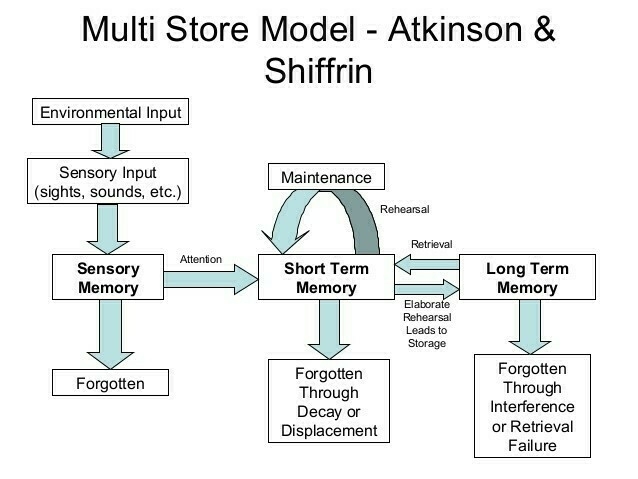
In terms of Open Pedagogy some of tne bring up a lack of structure anf the need of domain specific knowledge. This is especially true in subjects will well restricted learning, like math. When there is a specific solution to make something true.
The idea of greater student choice is not one absent of constraints. In fact by limiting choice you may spark creativity. A blank page is a daunting task.
One model for blending the situated nature of knowledge and learning is Cognitive Apprenticeships. In apprenticeship learning target skills are not only continually in use by skilled practitioners, but are instrumental in completing meaningful tasks with the apprentice.
In a cognitive apprenticeship learning of skills and knowledge gets embedded in social and functional context. The learner requires extensive techniques to encourage the development of self correction and monitoring skills. Basically you design cognitive apprenticeships “to teach the process experts use to handle complex tasks.”
References:
Brown, J. S., Collins, A., & Duguid, P. (1989). Situated cognition and the culture of learning. 1989, 18(1), 32-42.
Collins, A., Brown, J. S., & Holum, A. (1991). Cognitive apprenticeship: Making thinking visible. American educator, 15(3), 6-11.
Collins, A. (2013). Cognitive apprenticeship and instructional technology. In Educational values and cognitive instruction (pp. 121-138). Routledge.
Dennen, V. P., & Burner, K. J. (2008). The cognitive apprenticeship model in educational practice. In Handbook of research on educational communications and technology (pp. 425-439). Routledge.
Duncan, S. L. (1996). Cognitive apprenticeship in classroom instruction: Implications for industrial and technical teacher education.
Ghefaili, A. (2003). Cognitive apprenticeship, technology, and the contextualization of learning environments.fC Journal of Educational Computing, Design & Online Learning, 4(1), 1-27.
img credit: Mind Control Frequencies flickr photo by ₡ґǘșϯγ Ɗᶏ Ⱪᶅṏⱳդ shared into the public domain using Creative Commons Public Domain Dedication (CC0)
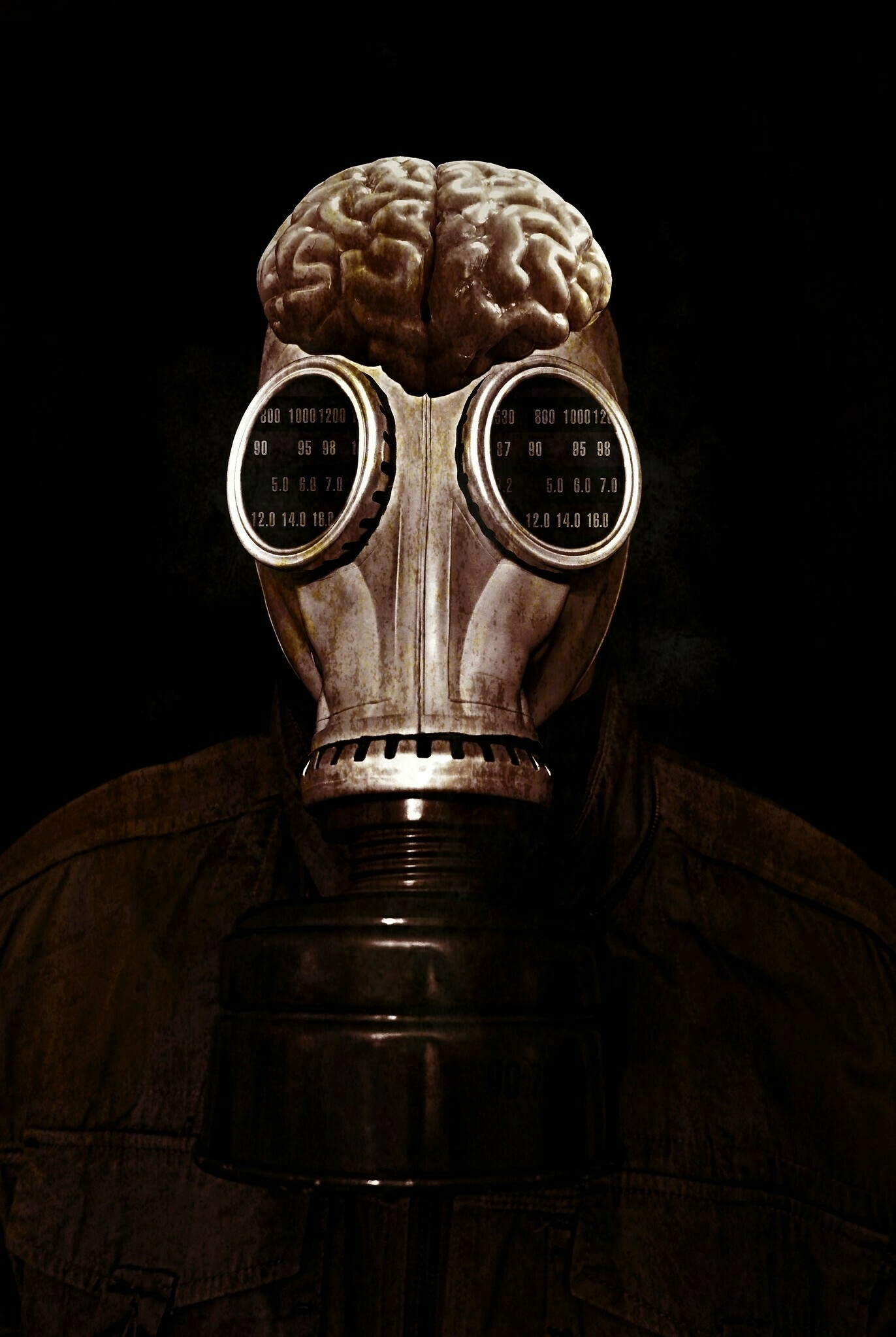
Tops for screencasting
University of Waterloo Center for Teaching Excellence
Cult of Pedagogy
www.cultofpedagogy.com/screencas…
Libguides
Bommarito, D. (2014). Tending to change: Toward a situated model of affinity spaces. E-learning and Digital Media, 11(4), 406-418. journals.sagepub.com/doi/pdf/1…
Gee, J. P. (2004). Affinity spaces. Situated language and learning: A critique of traditional schooling, 77-83. www.rochester.edu/warner/li…
Gee, J. P. (2004). Affinity spaces. Situated language and learning: A critique of traditional schooling, 77-8 web.archive.org/web/20170…
Abrams, S. S., & Lammers, J. C. (2017). Belonging in a Videogame Space: Bridging Affinity Spaces and Communities of Practice. Teachers College Record, 119(11), 1-34. doi.org/10.1177/0…
Wikipedia: en.wikipedia.org/wiki/Affi…
Learning in Online Affinity Spaces
So many teachers worry about role of Artificial Inteligence. Will kids hand in every paper written by ChatGPT? Does the use of AI reduce cognitive load so much that learning decay increases as retention decreases? Can kids learn without the struggle?
Yet if you teach learners to openly contribute to the knowledge base their work may show up in the corpus, or the sources, of Artificial Intelligence.
Basically, if you edit Wikipedia you are the AI.
Before teachers fretted about Artificial Intelligence and Large Language Models we worried about Wikipedia. To this day you will hear many educators call Wikipedia unreliable and warn students not to use it in research. That advice falls short as misguided based on bad assumptions.
First you need to know Wikipedia, like any Encyclopedia is not a primary source. They rely on sourcing other evidence to support their claims. Wikipedia specifically relies on secondary sources. Meaning an editor does not do original research looking for artifacts to summarize. Instead an editor wants to find evidence published in secondary sources such as the Press or research articles. The more times a claim gets supported by evidence in secondary sources the more reliability gets weighted.
Critics often note that, “Anyone can edit Wikipedia.”
Feature, not bug. Also, technically not true. Some articles have protections that only only allow extended confirmed editors to make changes. This means you have had to had made 500 edits before and can not have a brand new account. This helps to fight vandalism and efforts to control the narrative.
Nation states and Public Relations firms do fight over Wikipedia. The articles make up the backbone of search results and the large language models we erroneously call Artificial Intelligence. To counter this reality tens of thousands of editors help to craft the Encyclopedia
I have edited Wikipedia since 2009. Fourteen years. If you ask AI to define “Situated Cognition” often the first sentence I ever wrote on Wikipedia shows up in your definition.
Lately I focus on articles around Ukrainian history and russia’s illegal invasion and ethnic cleansing in Ukraine. I still edit articles in the field of cognitive science as well (these need lots of work)
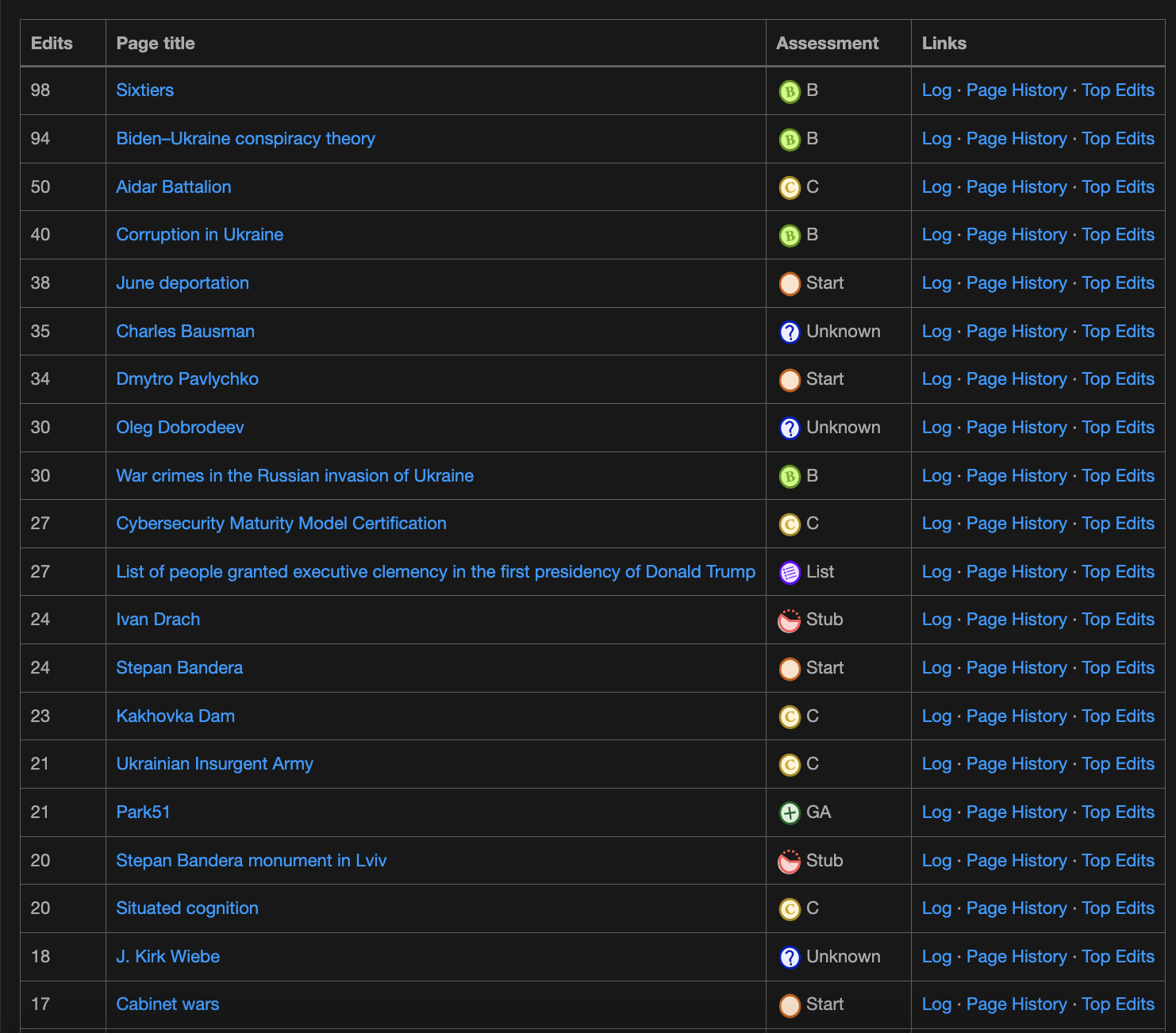
In these screenshots you see articles where I have made a majority of my edits. You also see a quality ranking. When you have students learn about Wikipedia teach them to examine the quality rating of an article. Have them examine the talk page to see if the article has sparked debate. Examine the edit history to make judgements about currency
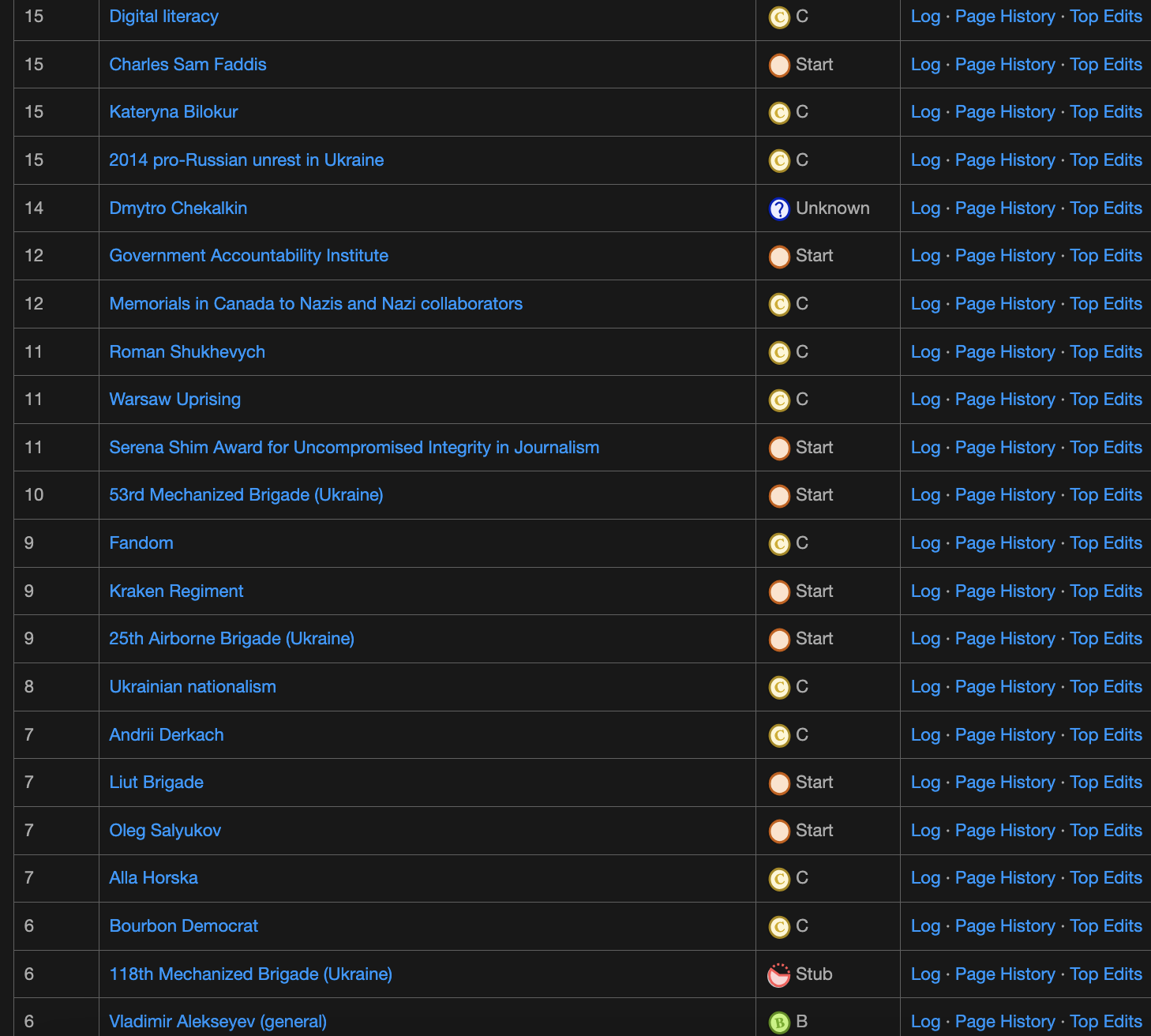
You can use Wikipedia in the classroom. We have large volunteer groups focused on developing lessons and ideas to get student to edit Wikipedia.
Yet you can also use any wiki in the classroom to build in the social practices of contributing to Knowledge Commons. You can choose many of the free wikis for educators. You can also utilize Google Docs as a public document and have it act very similar to a wiki. Same with Google Sites.
What do you want students to know and do after your wiki assignment. Cover the consequences of vandalism or publishing inapprotpriate content. Let them see the audit logs
So many educators, often college professors, will assign a wikipedia article to edit before students have expereience. Every wiki has a culture. You need to begin by building one in your classroom. You want students making many small edits over time. Too often people want to edit an entire article in Google Docs and then cut and paste it into a wiki. Teach students to make small edits, and to publish a revision after each claim and evidence gets added.
You do not have to have a wiki just for each class. In fact you can build school culture by creating a school wide wiki. Students across multiple grades and years can contribute
Wikis provide an audit log of when edits get made by a particular student. This creates wonderful assessment data.
You want students to work together. You can adapt Literature Circles and Reciprocal Teaching to wikis. Either assign teams to articles or create roles. Students can serve as lead editors, researchers, fact checkers, or style editors.
Wikis work best with a common text structure, In fact teaching students to write wiki articles provides wonderful opportunities for text structure lessons. Come up with an article template for students
Almost any written assignment can work for a wiki. Fiction or non-fiction.
1. Art and Culture
Beginning with art and culture, rather than a controversial topic helps. Especially if editing wikipedia. You build the culture. Now art can and should cause controversy but you can focus on historical details.
2. Historical Timelines
Timelines and biographies make for great wiki topics.
3. Short Stories
The first collaborative article my students wrote, on Google Docs, before Google even bought it and made it Google Docs, was a short story about a mean Cafeteria lady. Wikis do not have to be non-fiction.
These are just three ideas for wikis in the classroom. Really you can take them in so many ways.
Img credit: The tree of knowledge flickr photo by .^.Blanksy shared under a Creative Commons (BY-NC-SA 2.0) license
**

Want to read: www.amazon.com/dp/168247…